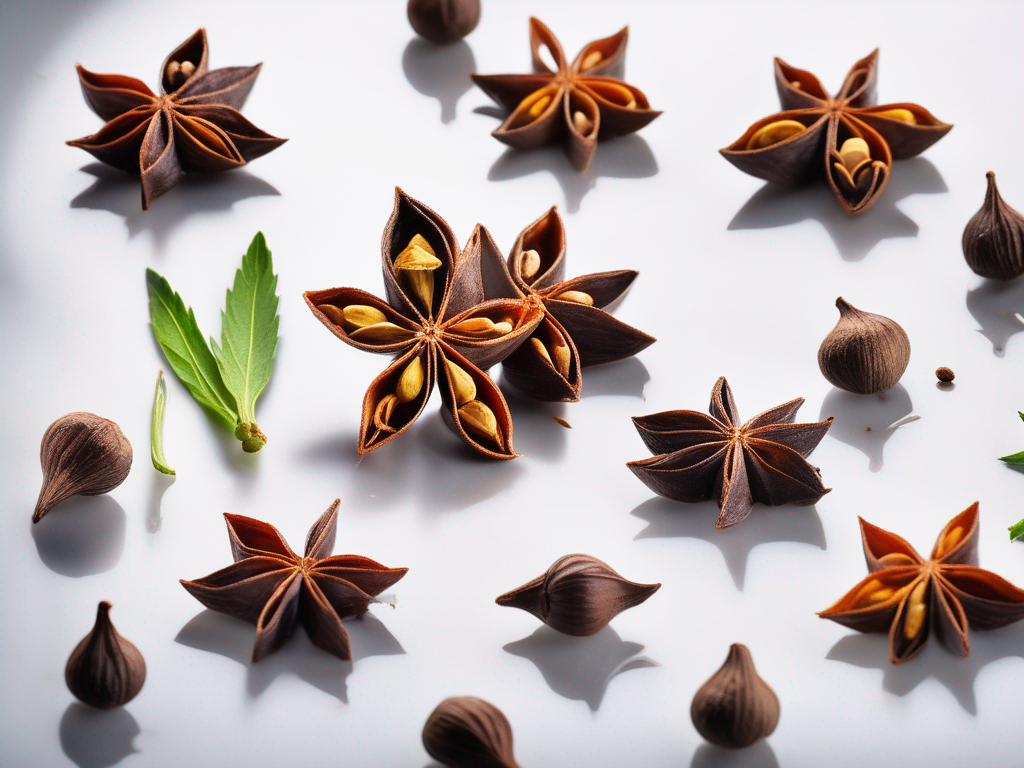
Safely Discarding Expired Anise: A Guide to Food Safety
Safely Discarding Expired Anise: A Guide to Food Safety
In the realm of culinary delights, anise stands out as a versatile and flavorful spice that adds a unique aroma to dishes. Whether you use it in baked goods, teas, or savory dishes, anise is a beloved ingredient that can enhance the flavor profile of various recipes. However, like all spices, anise has a shelf life, and knowing when to discard expired anise is crucial for maintaining food safety. In this comprehensive guide, we will delve into the reasons behind discarding expired anise and how to do it safely. (Anise)
Food Storage Essentials
Products that help you store and preserve your food better
Disclosure: As an Amazon Associate, we earn from qualifying purchases. This helps support our site and allows us to continue providing free food safety information.
Understanding Anise and its Shelf Life
Anise, scientifically known as Pimpinella anisum, is a flowering plant native to the Eastern Mediterranean region and Southwest Asia. The seeds of the anise plant are harvested and used as a spice in cooking and baking. Anise imparts a licorice-like flavor and is commonly used in dishes like cookies, bread, and soups.
Like all spices, anise has a shelf life that is influenced by various factors such as storage conditions, packaging, and exposure to light and heat. Over time, the essential oils in anise seeds can degrade, leading to a loss of flavor and aroma. Expired anise may also harbor mold, bacteria, or other contaminants that can compromise food safety.
Signs of Expired Anise
To determine if your anise has expired, look out for the following signs:
- Loss of Aroma: Fresh anise seeds have a strong, licorice-like aroma. If your anise smells musty or rancid, it may have gone bad.
- Change in Color: Anise seeds are typically brown and have a uniform color. If you notice discoloration or spots on the seeds, it's a sign of spoilage.
- Texture Changes: Expired anise seeds may become clumpy, sticky, or powdery, indicating that they are no longer fit for consumption.
- Taste Test: If in doubt, taste a small amount of the anise. Spoiled anise will have a bitter or off-flavor.
Safe Practices for Discarding Expired Anise
When you discover that your anise has expired, it's essential to dispose of it properly to prevent foodborne illnesses. Follow these guidelines to safely discard expired anise:
1. Check the Packaging
Before discarding the anise, check the packaging for any visible signs of damage or contamination. If the packaging is compromised, transfer the anise to an airtight container for disposal.
2. Store Separately
To prevent accidental consumption, store the expired anise in a separate container or bag away from other spices or food items.
3. Seal Properly
Seal the container or bag containing the expired anise tightly to prevent the spread of odors and contaminants.
4. Disposal Methods
When it comes to disposing of expired anise, consider the following methods:
- Trash Bin: The most common method is to throw the expired anise in the trash. Seal it in a plastic bag before placing it in the bin.
- Composting: If you have a compost pile, you can dispose of organic matter, including expired anise, in the compost. However, make sure the anise is not moldy or contaminated.
5. Clean the Storage Area
After discarding the expired anise, clean and disinfect the storage area to prevent cross-contamination with other spices or food products.
General Tips for Anise Storage and Freshness
Recommended Food Storage Products
Keep your food fresh and organized with these storage solutions
Disclosure: As an Amazon Associate, we earn from qualifying purchases. This helps support our site and allows us to continue providing free food safety information.
To extend the shelf life of your anise and maintain its freshness, consider the following tips:
- Store in a Cool, Dark Place: Anise seeds should be stored in a cool, dark place away from heat and sunlight to preserve their flavor and aroma.
- Use Airtight Containers: Transfer anise seeds to airtight containers to protect them from moisture and air exposure.
- Label and Date: Properly label the container with the date of purchase to track the freshness of the anise.
- Avoid Moisture: Keep anise away from moisture, as it can cause mold growth and spoilage.
Conclusion
Knowing when to discard expired anise is essential for maintaining food safety and ensuring the quality of your culinary creations. By understanding the signs of expired anise, following safe disposal practices, and implementing proper storage techniques, you can enjoy fresh and flavorful anise in your dishes. Remember to regularly inspect your spice cabinet, rotate your spices, and follow best practices for food storage to enhance the longevity of your anise and other spices. Stay vigilant, stay safe, and savor the delightful flavors of anise in your favorite recipes.
For more information on anise and other culinary delights, visit our anise page. Happy cooking! (Anise)
Related Posts
Here are some other articles you might find helpful:
- The Ultimate Guide to Properly Storing Caraway to Prevent Mold Growth
- The Ultimate Guide to Properly Storing Anise for Freshness
- Preserving Angelica: Best Practices for Pantry Storage
- Preserving Fresh Angelica: Quick Tips for Longer Shelf Life
- The Ultimate Guide to Properly Storing Angelica for Extended Shelf Life
Food Storage Essentials We Love
Products that help you store and preserve your food better
Disclosure: As an Amazon Associate, we earn from qualifying purchases. This helps support our site and allows us to continue providing free food safety information.
Scan your food directly and get instant safety info using our AI-powered camera feature.




